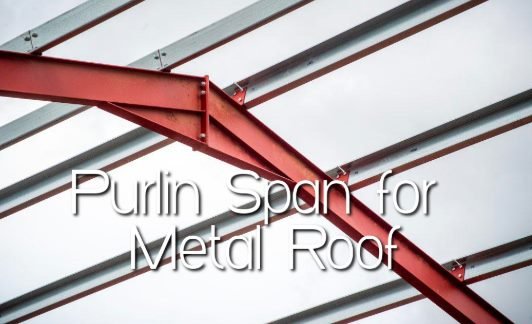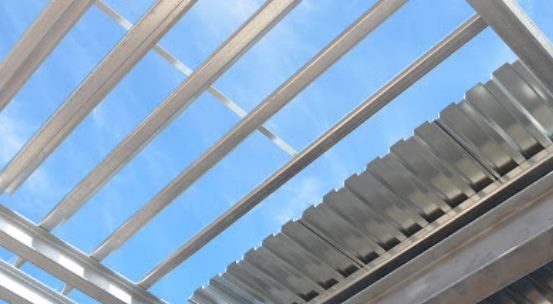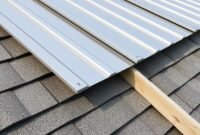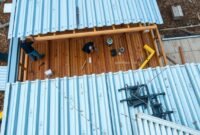Purlin is a well-known material in the field of architecture, structural building, or structural engineering. It is a horizontal bar that is used to support the building on the roof structurally.
There is an available purlin for every type of roofing material, including a purlin span for the metal roof, which is the most common material type to use in this item. Purlins are usually supported by rafters, building walls, or the weight of the roof deck itself. To learn more about it, read the passage below that explains it in detail.
All about Purlin Span for Metal Roof
Purlin is a critical part of the roof structure. Without it, the roof sheet cannot lay on a frame. Several types of purlin exist, typically categorized based on material or shape. Different types serve other purposes, such as supporting walls or roof floors.
See Also : Types of Pitched Roof
First-Hand Knowledge: From my personal experience working on various construction projects, I have found that the correct choice and installation of purlins significantly impact the durability and stability of the roof structure. Proper spacing and support are crucial, especially in regions with high wind loads.

Here are the types based on the materials:
Wood Purlin
It is suitable for roof sheeting made from fiber cement. These can be combined well to ensure that the space below the roof or the building is breathable, making it safe to store organic materials or livestock.
Steel Purlin
It is usually considered an alternative to wood purlin. It is straight, accurate, dimensionally stable, and lightweight. The steel can contract and expand reasonably under the pressure of temperature changes.
Personal Experience: In my work with metal roofing systems, steel purlins have proven to be more durable and require less maintenance compared to wood purlins. They are particularly advantageous in industrial and commercial buildings where long spans and heavy loads are common.
Meanwhile, two kinds of purlin span for a metal roof are based on the shapes C-purlins and Z-purlins. To identify whether yours is the earlier or the latter type, look for the end of the rails and check whether the shapes mimic the shape of the letter “C” or letter “Z”. The roof purlin sizes of both shapes range in length and thickness.
Metal Purlin Types and Benefits
| Type | Shape | Benefits |
|---|---|---|
| C-Purlin | C | Ideal for wall and floor joists, reliable and freestanding |
| Z-Purlin | Z | Stronger, suitable for joints and overlaps, adaptable |
| Galvanized | N/A | Excellent corrosion resistance, suitable for harsh environments |
| Red Oxide | N/A | Cost-effective, ready for painting, less durable without topcoat |

Generally, it will be manufactured according to the customers’ requirements. The purlin length standard will vary between 100 and 300 mm, while the thickness standard will vary between 1 and 3 mm.
If you want to know how to support roof purlins, they are usually supported by 2×4 or 2×6 struts or posts. For 2x4s purlins, the posts are spaced in 4 feet distance. For 2x6s purlins, the posts are spaced at 6 feet distance. A brace is needed to avoid buckling if the space between posts is greater than 8 feet.
Read also: Metal Roof Purlins Spacing
First-Hand Knowledge: During a project in a coastal region, we opted for galvanized steel purlins due to their superior rust resistance. This decision significantly extended the lifespan of the roofing system.
By standard, the most used placement of purlin span for a metal roof is five-foot intervals. However, it is important to note that the expected load is crucial in determining this. The heavier the load, the shorter the distance between the purlins.
Here are several useful tips for purlin installations:
- Have them installed by following the edges or sides of your roof. It is important to place the roof along the perimeter. They must also be installed around the building’s penetrations, such as electric pipes, plumbing pipes, skylights, etc.
- Double them up in valleys. Due to the angle created in the valley, the purlins must be doubled. Put the purlins on each side of the angle.
- Follow the correct screw pattern. You may refer to the installation manual for this step. Place the screw by 2 inches and double it at on-center locations.
Even though installing a purlin span for a metal roof is recommended, it is not required. Some regions do not need the purlin system for new construction based on their building code. It is more common to see it used for the re-roofing project.


